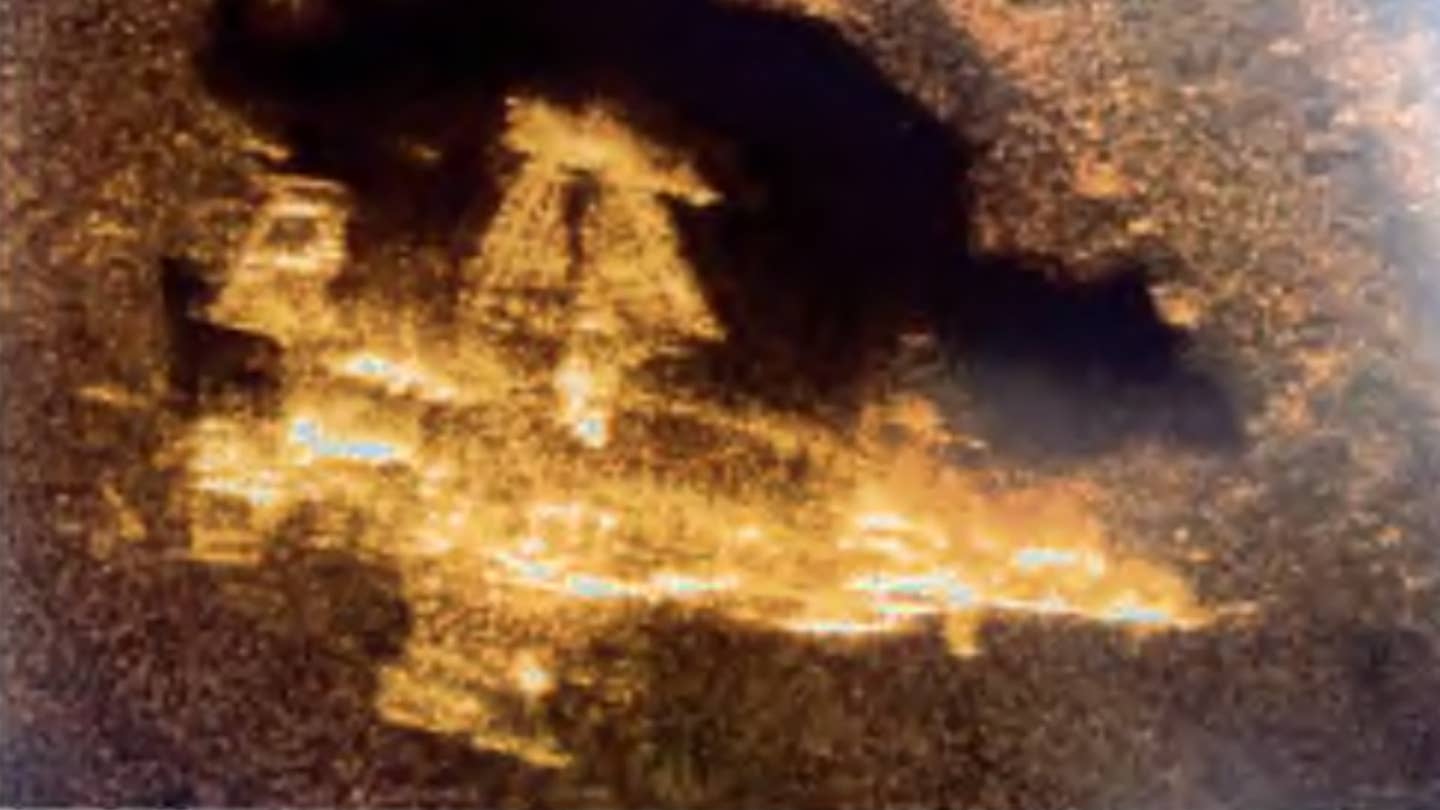Roughly two years after the British F-35B crashed in the Mediterranean, a sonar image has now surfaced depicting the overturned wreckage of the fighter jet on the seabed, which was subsequently recovered by the authorities.
The newly published image is included in the UK Defense Ministry’s investigative report regarding the November 2021 accident. The report accentuates more extensive concerns about safety and security aboard the carrier throughout its inaugural operational expedition.
On August 11, the UK Ministry of Defense released a 148-page report shedding light on an incident involving the F-35B aircraft. Although partially edited, this extensive document provides a detailed account of the event.
Central to the report’s findings is identifying the immediate trigger for the mishap that befell the F-35B aircraft, known by its serial number ZM152 or construction identifier BK-18.
The report concludes that the crash was caused after one of the air intake blanks designed to protect the engine from foreign objects became stuck in the F-35’s intake and lowered engine power as the aircraft made its takeoff roll.

The item at the core of the November 2021 incident was intended to function as a protective cover for the intake, safeguarding the intake system and the aircraft’s engine from potential foreign object damage (FOD).
However, in this instance, the very blank designed for protection became the foreign object causing the issue. The personnel on the deck could not spot that it had become firmly lodged deep within the intake.
This obstruction severely impacted the engine’s power generation, resulting in a substantial deficit of thrust amounting to 17%.
As the aircraft neared the carrier’s ramp, the pilot made an effort to abort the takeoff; however, the aircraft’s momentum propelled it beyond the edge, ultimately leading to the necessity of an ejection.
According to the report’s findings, a confluence of factors, including wind conditions, the ship’s forward motion, and the parachute’s movement, led to the pilot’s touchdown on the deck, approximately six feet to the right of the takeoff ramp and three feet behind the deck’s front edge.
In the aftermath of the incident, the aircraft remained afloat in close proximity to the ship briefly before descending beneath the surface.
Notably, a subsequent discovery revealed the aircraft intact but inverted (as depicted in the sonar image that was made public) on the seabed, resting at a depth of 2,000 meters (6,562 feet).
As the aircraft became submerged, the air intake blank, the incident’s root cause, was observed emerging from the air intake.
In December 2021, the wreckage of the fighter, along with other components that had become disconnected, was successfully retrieved from the depths.
Following this retrieval, approximately a month later, unofficial visual material showcasing the salvaged jet began circulating on social media platforms.
The report also highlights past instances involving dislodgement, expulsion, or loss of air intake blanks from the ship. Specifically, it mentions four comparable incidents concerning US aircraft, though none of these prior occurrences resulted in the loss of an airplane.
The recovery of ZM152 from the seabed, an operation that incurred costs amounting to £2.63 million ($3.35 million), marked the subsequent phase in the aftermath of the incident.
Key Findings Of the Investigation Team
The air intake blank is an integral component of protective equipment known as “red gear,” designed to be affixed to the aircraft’s sensitive parts during periods of non-flight activity.
Typically, this equipment would be installed on the aircraft while the ship was berthed in port to shield specific aspects of the aircraft from potential espionage activities.
However, this gear was generally not employed during sea voyages due to its susceptibility to being dislodged by relatively modest winds or the exhaust generated by nearby aircraft during takeoff.
The report further raises inquiries about the preparedness of the UK’s frontline F-35 unit, 617 Squadron, for their deployment. It notes that the squadron was subjected to an operational tempo that exceeded its readiness level.
This accelerated pace was driven by the Carrier Strike Group’s aspiration to sustain a flying rate comparable to surge operations.
The investigation further revealed that personnel within the unit had not received adequate training for operations at sea, leading to heightened fatigue levels among the team.
The intensified flight rates also resulted in limited opportunities for fresh air and recreational activities, exacerbating fatigue for those without regular access to outdoor spaces.
During the investigation, a witness portrayed the carrier as “the most extensive submarine in the Navy.”
This poignant comparison underscored the circumstance wherein certain personnel were deprived of regular opportunities to access outdoor areas, a situation attributed to their demanding work commitments.
In the culmination of these factors, the investigation panel concluded that these issues collectively contributed to the unfortunate accident.
In his concluding statements, Air Marshal Steve Shell, the Director General of the UK Defense Safety Authority, pointed out that the UK’s Lightning Force, a collaborative entity comprising both the Royal Navy and the Royal Air Force responsible for F-35 operations, had not yet achieved a “critical mass.”
This meant that the various squadrons within the Lightning Force could not effectively support each other’s deployments without intruding on their operational capacities.
He emphasized the necessity for defense authorities to acknowledge the inherent trade-offs between readiness, expansion, and safety until this critical mass is attained.
Moreover, he articulated that the accident served as a pertinent reminder. As UK F-35 operations expanded and the government intended to broaden carrier deployments, the incident served as a timely trigger to pause and reevaluate strategies.
He expressed the importance of ensuring that the Lightning Force is optimally equipped for success, given the evolving landscape of F-35 operations and the government’s ambitions for carrier activities.
- Contact the author at ashishmichel(at)gmail.com
- Follow EurAsian Times on Google News